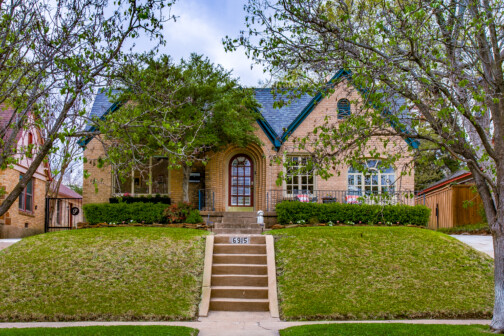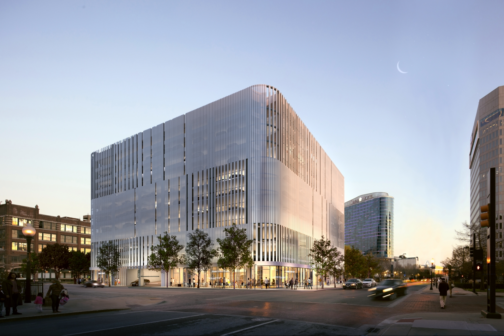[Warning: Prepare yourself for a long-A squiggle squiggle post.]
Recently, I received an email that could generally be described as somewhere between angst-ridden and soaked to saturation in rage-a-hol. The general gist expressed a feeling of helplessness while the City of Dallas, one in which the person obviously loved and had a passion for, was being torn asunder for more endless seas of paving, parking lots, and overly engineered contrivances.
The following was my best effort to rationally and analytically (with a great deal of insider knowledge) weave the tale of the City by the stinky-apparently flood of ark-necessitating proportions river. Afterwards, a few other nationally and internationally recognized colleagues/experts chipped in with a telling contrast between Vancouver and Dallas, which will follow my posted email.
But before you run off on the “omigod we’re not Vancouver you hippy commie” reactionary tangent, let me explain the relevance within the comparison.
People are people. And because our underlying needs and desires, the way we are wired, are the same no matter where we are, city form and the processes therein function similarly. Because individuals are different, the way we flavor our cities is driven by the unique identity of the various individuals. Urbanity is the platform for expression. Urbanity is science, expression is art. In the science of cities, yes you can compare various places.
Recently, as you may know Vancouver hosted the Olympics. Dallas has on occasion chased the dream of one day hosting the Olympics as well. My recollection is that they never curried enough favor with the USOC to be considered a viable candidate to win over its grandaddy, the IOC.
Dallas also likes to talk in terms of “World Class Cities.” We get all self-congratulatory when hypocritical hacks like Kotkin and Brueggman tell us we are the paragon. I don’t think it would be a stretch of the imagination to say that one relatively objective status indicator as “World Class City” is membership in the prestigious club of having hosted an Olympic Games. There have certainly been more Olympics held than there are World Class Cities in the world (how else do you think Atlanta got them – oh, right…bribery and corruption), but taking a look at some of the distinguished cities on the list, it is obviously a good start (just recent and future sites):
Rio, London, Athens, Vancouver, Sydney, Beijing, Turin, Athens, Barcelona…
/once lived in Atlanta. Left.
I believe in honesty. Science and understanding require it. Improvement requires understanding. It also requires deep affection. I love the City of Dallas and all of its eccentricities and eccentric individuals. I too want it to be a world class city, but you can’t get there without first being honest with yourself. Just like you can’t achieve self-actualization without deep, honest introspection. The emotion is there. The direction is not.
So in the vein of achieving “World Class” thru introspection and understanding (edited to make appropriate for the blogosphere):
I think the palpable rage expressed here represents the way many (most?) Dallasites feel about the multitude of projects happening around the City. The citizenry feels misled at best and disobeyed at worst. The funny thing about Dallas is that there are many people/groups in positions of power (of various forms), but at the same time nobody is in charge. Very few get along or have been marshaled into a singular direction or vision. Filling the void is the standard operating procedure, which comes in the form of road widening and highway expansion under the guise of “road improvements” or alleviating congestion or “economic development.” All of which provide temporary relief, but long-term create more problems than when they were started.
Because the rabble is starting to wise up to the way they are treated as a third world country in need of vast infrastructural projects (many of which are unnecessary and bankrupt the city of the long-term), they become further cloaked under a new “guise,” public parks and green space. Who could say no to parks right?
Well, eventually Dallas citizens realized that the park was simply another way to appease the masses in order to build another highway, which not so ironically would further disconnect the City from the River improvements. Slowly but surely under intense local pressure the “parkway” was removed from the Oak Cliff side of the channel to only the Dallas side. Step 1 in the right direction. Pressure endured.
Now, a new project emerged which is the widening of Industrial Blvd and renaming to Riverfront Blvd. I had a long convo with somebody directing one of the design processes yesterday who felt the “improved” Industrial might signal a fall back plan and that under the increased and growing scrutiny the Trinity Toll Road is DOA. Of course, Industrial-turned-Riverfront is still a widening project under a guise of “complete street” and laughably gets compared to Champs Elysees…without being the Main Street for a global Capital and the cultural totems of an entire nation, unless of course if you count Lew Sterrett Jail (read into that what you will).
In sum, all of the projects: Pegasus, Woodall Rogers Deck Park, multiple Calatrava bridges, the Arts District, are all projects that, fall under misguided attempts at economic development. Sure, they might generate some, but in the long-term, I believe many to be overstated in their effect. For example, the Deck Park has the nearly fully built out Arts District on one-side and LoMac to the north side. What is left? Perhaps the improvement of one more block to the north side, which will engage McKinney Ave before the park anyway. That would be maybe a $60 million project leveraged by a $60 million park.
The “connectivity” people suggest it will add is overstated as well, as one of the three connecting roads between uptown/downtown has been removed. Removing all of these local, “grid” connections in favor of the overly hierarchical dendritic pattern is a mistake, cutting off the neural network of local economies in favor of a system where any traffic jam acts as a stroke is no way to build a city, which is simply the physical representation of a local economy.
Furthermore, because Dallas is bounded by other municipalities, unlike Houston which annexed all of its growth, the highways act as the lifeline for the suburbs to leach the life from Dallas, who gets stuck with the carnage and the bill.
For those who don’t know, LoMac (Lower McKinney) is a lot of density and very little urbanity. It was driven by the recent housing boom and the residential towers are insular and have little to no relation to a very bad street network, which is the foundation of all of the problems. The street design and transportation framework that is guided by increasing capacity and flow creates roads that go through places but never to places. The result is that any and all development is hurt by the countervailing pressures to be both near traffic but away from it.
The funny thing is that so many of the recent projects at the large scale: Victory and Park Lane Place, or the individual buildings such as the Ritz Carlton in LoMac will not reach their full potential/value for some time as they were designed to be “exclusive” both in terms of market and urban form. They didn’t connect with their surrounding fabric, meaning they severed the bond between properties ensuring mutual stewardship, care.
If a city is a hierarchical pyramid where Lovability is founded upon Livability which rests on a foundation of Viability, 20th century economic development reigns supreme still in Dallas: big projects as an attempt at Lovability or in a phrase Dallasites are fond of “a world class city.” The problem is that these huge projects require subsidy and that since they ignore the second step of livability, we then have to go back and subsidize efforts towards livability as well.
Rather, this so-called fiscally conservative state should be focused with their “economic development” subsidies directed at the small-scale, as incremental “acupuncture” to stimulate the livability of the neighborhoods. Once that is jump-started the private market will flock and lift areas from viable to livable to lovable, just as what happened in State-Thomas/Uptown, now a fully mature neighborhood where new businesses and neighborhood character are outgrowths of the neighborhood.
The best way to do this is to reduce vehicular capacity of the road network, increase capacity of other forms of transit, recapture ROW which can be used as incentive to roll into private development. So many areas are so fractured by repellent forces, highways, poorly designed arterials, etc. that some extra room will be both helpful and necessary to generate some critical mass.
I was referred to in this email as a local optimist. Sometimes it is difficult, but I am always imbued by the inertia Dallas generates when it puts its collective mass behind a meme (for better or worse). When it does something, it goes all the way. I see my task as marshaling that capacity for momentum under the guiding “pattern” of livability.
As promised my email was then responded to by Professor Patrick Condon of UBC with a comparison between Dallas and Vancouver (published with permission):
Dallas and Vancouver. Night and Day.On this thread, and the tragedy of Dallas, I provide a reminder to all that some might find inconceivable. The City of Vancouver somehow survives without any freeways.
None in the downtown.None in the surrounding neighborhoods.None in the industrial districts.None.There are no proposals to build one within the city.
In twenty years the number of jobs in the city has increased dramatically and the population grown by over 100,000 or 25%. In that same period commuting times have fallen (the only region in the country where that has happened) and the number of car trips into and out of the downtown has declined.This is no pedestrian nirvana. Per capita car ownership in Vancouver rivals that of LA. But a robust system of four lane arterial streets (the legacy of the streetcar period located at half mile increments or a ten minute walk apart) keeps things moving, albeit slowly.There are no proposals to add freeways within the city. The Board of Trade gave up lobbying for that in the 1970s.While the Province, much to the dismay of many, continues to press forward on various highway widening and extension projects in the suburbs, even there they represent a minuscule fraction (on a per capita basis) of what is happening in Dallas.Before moving here from Minnesota i would never have imagined it possible to have a major and rapidly growing center city without a freeway. How dumb i was not to realize that a distributed system of streetcar arterials was the more resilient and “right sized” way to do it.Come up and see for yourselves.You simply will not believe it.I didn’t.Not at first.
Later, somebody else mentioned the following contrast in transit planning/difficulties:
And speaking of Dallas and Vancouver, here are two interesting articles that juxtapose the former region’s crumbling plans to build a classic sprawl-scaled rapid transit system with the latter region’s promising plans in progress to determine the most appropriate transit technology to build in a “ripe” urban corridor.




